
MIASTO 44 film still
MIASTO 44
Directed by Jan Komasa
Premiere: September 19, 2014
It’s not easy to write about MIASTO 44. I don‘t know what to think. Is it good? Do I like it? I sat through it, my stomach in knots, frequently wishing it would just end. I wanted to go back for a second look, but it is too painful. I knew and loved so many of these people, some of whom I saw also in the other film, Warsaw Uprising.
MIASTO is about the young generation of ’44, and aimed at the current generation of the same age. The production made use of the latest technology, along with the language of television commercials and video clips. We are engulfed in fire and blood, explosive noise, atrocities and horrific wounds. The action is occasionally suspended, and modern music lends it an appearance of a realistic computer game.
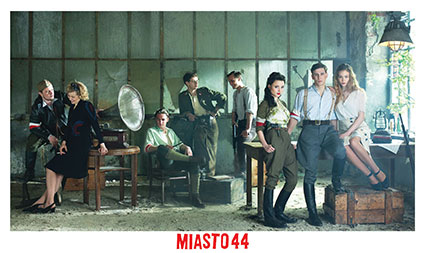 Jan Komasa (born 1981) worked on MIASTO 44 for 8 years. The film budget was circa 8 million dollars. His work involved collaboration with hundreds of his peers, along with war veterans, politicians, journalists, and countless numbers of Varsovians who kept their fingers crossed for him regardless of their position in the endless national discussion – debate, if you will – about monumental decisions made under extreme circumstances. Notable among them is the Museum of the Warsaw Uprising, which is visited by half a million people each year. The Museum is often accused of taking the position of apologist for the Uprising, dismissive of opposing opinions and promoting an irrational patriotism that can only lead to more defeats.
Jan Komasa (born 1981) worked on MIASTO 44 for 8 years. The film budget was circa 8 million dollars. His work involved collaboration with hundreds of his peers, along with war veterans, politicians, journalists, and countless numbers of Varsovians who kept their fingers crossed for him regardless of their position in the endless national discussion – debate, if you will – about monumental decisions made under extreme circumstances. Notable among them is the Museum of the Warsaw Uprising, which is visited by half a million people each year. The Museum is often accused of taking the position of apologist for the Uprising, dismissive of opposing opinions and promoting an irrational patriotism that can only lead to more defeats.
And yet at the same, the Uprising Museum inspired an earlier film, the critically acclaimed Warsaw Uprising. That film was made entirely from archival footage – the Warsaw Uprising Chronicles – of the uprising shot as cinema verité by young cinematographers, themselves members of the Home Army, but ordered to film the uprising, embedded – as we say today – alongside the insurgents. Their assignment was to create an authentic record for history, but for 50 years it was a record suppressed by communist authorities. Now, when at last the record is out, the power of Warsaw Uprising is without equal in film. Although we watch the action seated in comfortable theatre seats, we are transported to August 1944 and we see the young men and women of the Home Army. Helplessly, we watch their hopeful and enthusiastic assertion of their freedom, their idealistic readiness to take action, their courageous fighting, and the ultimate hopelessness of the battle. Even the naïve and unnecessary fictitious story with its artificial dialogue that is superimposed on the dramatic reality of the film does not detract. It is gripping, and we are devastated by what we see.
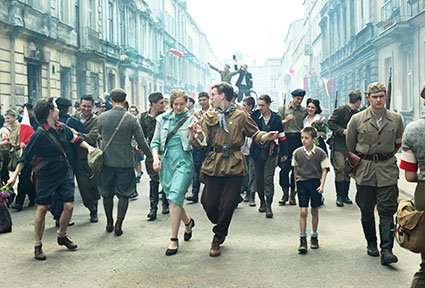
MIASTO 44 film still
I don’t know when Jan Komasa first saw these archival materials, but it is he who influenced the Museum to produce Warsaw Uprising. By that time, he had already begun work on MIASTO and it is obvious the archives must have had a considerable impact on him. His heroes are faithful to the image of the young people of those tragic times.
We could say disturbingly faithful. The decisions they made are, for us, at once understandable and infuriating. Because we know what they could not possibly have known: not only did they not know how their struggle would end but they also did not know that they didn’t have a chance. It could not have ended differently. The emotions of 20-year olds are easily inflamed, while powerful enemies are driven by cold logic. The uprising could only go on to its ineluctable end.
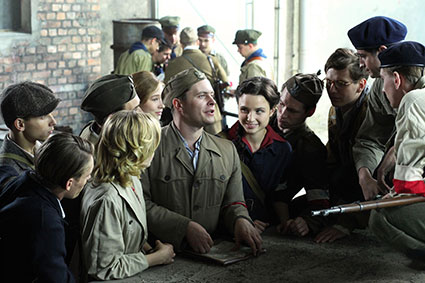
MIASTO 44 film still
Jan Komasa has said that he doesn’t pass judgment. Yet it is impossible to go away without the feeling that MIASTO is a dramatic indictment of the decision to launch the uprising. The film shows us no evidence of political or strategic reflection, no context to provide an insight into the conditions that led to this moment. A few isolated sentences crop up here and there… and then evaporate. Lost also is the reality that these observations, so crucial to understanding history in hindsight, were not – because they could not – have been clear in 1944.
MIASTO 44 shows an important historical event of WW2 from the perspective of fighters only. It is a film about idealistic and hopeful youth trapped between their patriotic devotion to independence and cruel reality.
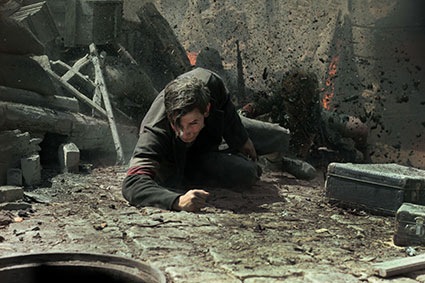
MIASTO 44 film still
We see beautiful, young, sensitive, courageous Poles, who served, in fact, as “cannon fodder.”
I leave the cinema thinking that the loss of a European capital of more than a million inhabitants, the lives of the city’s people, and the cultural heritage of the entire nation was left, at a critical time, in the hands of those noble kids.
Sadness and anger at once enveloped me and left me empty, because we were served a rather inadequate story, with no context and no reflection on the bitter choices facing them.
Being a generation older than Jan Komasa, I admire him for his talent as a filmmaker, for leading the actors and the crew, and for his courage. I hope he will make another film about the Warsaw uprising, twenty years from now. I would definitely want to see it.
CR


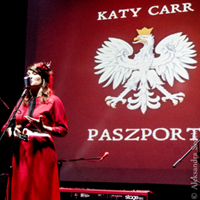
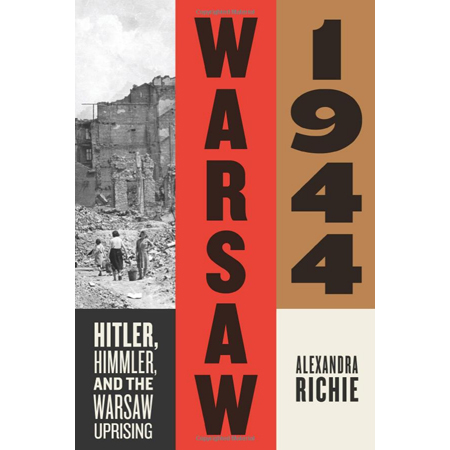
Pingback: Welcome to our 2014 Fall-Winter Issue!
Pingback: Fall-Winter Version of the Cosmopolitan Evaluate | Posts
I didn’t like this movie. I’m not against the topic because the historical background was quite alright. But the way in which it was presented sucked. I mean, come on, at the time when the Germans were shooting, two kids were having sex. Please… Like they’d have plenty of time to do this. I think that the director was aspiring to match the Hollywood productions. The problem was that he created a kitsch instead of a masterpiece. And what was with this music? It did not match the scenes completely. You know, I’ve seen a lot of movies about WWII, and I must admit that they were much better than “City 44”. I was so disgusted with this movie that I left the cinema halfway through it.
I have read as much as available about the Warsaw uprising. I believe that the tragedy of this event is much like what we are seeing today where cities are engulfed with total war. Violence is beyond anyone’s imagination. Those that have seen just a glimpse of violence or a hint or threat in may suffer from PTSD. This is an overwhelming topic to cover in a movie. “Gone with the Wind” demonstrated a passing of a time that changed a nation. “Saving Private Ryan” focused on a special story of a family who had lost three sons and living son who was in the D-Day invasion. The horror of Warsaw in just one city among hundreds of small towns and cities that experienced some of the same events. This brings back memories from my uncles and dad who were all in WWII and many of my neighbors where I grew up, who were retired WWI, WWII, Korea, and more recently Vietnam Veterans and other conflicts.